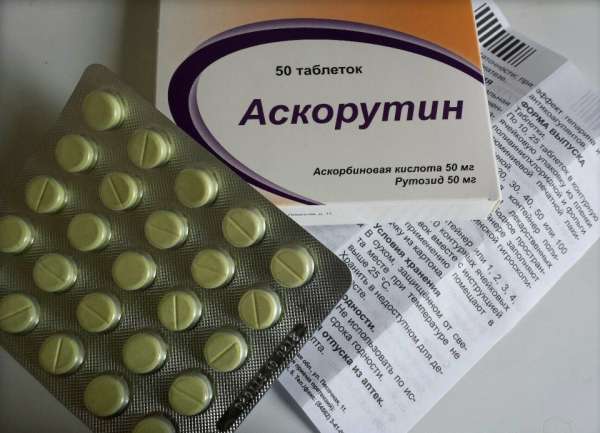Vasodilators for the brain. Effective preparations for head vessels: a medicinal review from VesselInfo.
vasodilator drugs for lower extremities widely used not only in the treatment of heart disease or hypertension, but also for the treatment vascular diseases legs. The mechanisms of action of vasodilating substances (vasodilators) are quite diverse. This allows the use of vasodilators in the composition complex therapy with absolutely different types peripheral vascular pathology: atherosclerotic lesions, angiodystonia, varicose veins, etc. What are the types of vasodilators for the lower extremities, what is the difference between their mechanism of action and what diseases vasodilators apply, we will analyze in the article.
The conditions in which it is necessary to increase the blood supply to the tissues of the lower extremities, that is, to expand the peripheral arteries and veins, are quite different in origin. For example, intermittent claudication may be the result of atherosclerosis, arterial spasm in Raynaud's disease and obliterating endarteritis - a consequence of a violation of the nervous regulation of vascular tone. But changes in patients with diabetes mellitus and varicose veins are associated with disorders at the level of microcirculation. Therefore, vasodilators for the legs and arms should be selected in such a way as to take into account the mechanism of development of circulatory disorders and compensate for pathological changes in the lower extremities.
The influence of vasodilators for the lower extremities on the mechanisms of regulation of vascular tone is reflected in the following classification:
|
Action type |
Medicine group |
|
Influence on the peripheral nervous system (PNS) |
|
|
Effects on vascular smooth muscle (direct vasodilators) |
|
|
Decreased activity of the renin-angiotensin-aldosterone system (RAS) |
|
|
Various vasodilatory drugs |
|
Let us examine in more detail the mechanisms of action of the presented groups of drugs and give examples of vasodilator drugs related to them.
Substances affecting the PNS
Ganglioblockers, sympatholytics and α-blockers are effective drugs for the treatment of leg artery pathology.
Ganglioblockers act at the level of sympathetic nodes, such as the solar plexus. By stopping the flow of vasoconstrictive impulses in the sympathetic ganglia, they contribute to a significant expansion small arteries, arteriovenous anastomoses and precapillary sphincters. List of effective ganglion blockers for the treatment of lower extremities:
- Benzohexonium.
- Pentamine.
- Dimecolin.
- Quateron.
- Pyrilene.
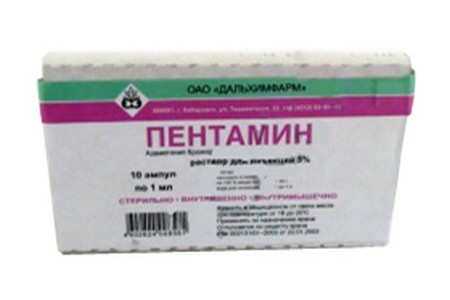
The drugs contribute to a significant expansion of small arteries.
These drugs are effective in circulatory disorders caused by nervous regulation disorders (Raynaud's disease, endarteritis, acrocyanosis). It must be remembered that vasodilators of this group greatly slow down blood flow at the level of microcirculation. This should be taken into account in atherosclerosis, a tendency to thrombosis and varicose veins, since under these conditions they are contraindicated.
Adrenoblockers are substances that bind to adrenaline and norepinephrine receptors in the vessels and block them. vasoconstrictor effect. This is accompanied by an improvement in the blood supply to the tissues. This group includes the following list of vasodilators:
- Phentolamine.
- Prazosin.
- Doxazosin.
- Terazosin.
- Vazobral.
- Nicergoline.
- Anavenol.
Vasobral, Niceroglin and Anavenol can be used for varicose veins and diabetic angiopathy. These drugs cannot be called true vasodilators, because. they have a multidirectional effect - they expand the arterioles and increase the tone of the venules. At the same time, an increase in wall tone is noted for both healthy and varicose veins. In addition, the vasodilator Anavenol is also effective for the treatment of trophic disorders in varicose veins.
The remaining α-blockers are effective in circulatory disorders caused by a disorder of nervous regulation (Raynaud's disease, endarteritis, acrocyanosis), as well as in diabetic angiopathy and obliterating atherosclerosis of the vessels of the lower extremities.
Direct vasodilators
These agents include nitrates, calcium channel blockers, and arterial vasodilators.
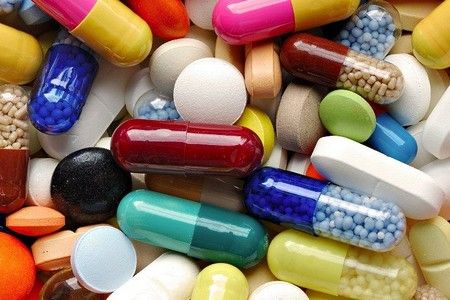
Such agents dilate blood vessels with the help of nitric oxide released from the ground substance.
The mechanism of action of nitrates is associated with the release from the original molecule active ingredient– nitric oxide (N0) – one of the most effective vasodilators. It triggers cascades of intracellular signaling reactions in target cells, which leads to vasodilation and a decrease in platelet aggregation. Of the drugs in this group for Raynaud's syndrome and obliterating endarteritis, the following list of nitrates is used:
- Isosorbide dinitrate.
- Nitroglycerine.
These drugs are contraindicated in varicose veins and severe atherosclerosis of peripheral vessels.
Another subgroup of drugs that directly affect vascular smooth muscle cells are calcium channel blockers. Calcium channels are macromolecular proteins that, as it were, “cut through” cell membranes. Through the formed channels, calcium ions move inside the smooth muscle cell of the vessel, which causes its contraction. The drugs of this subgroup block the appearance of such channels and prevent vasoconstriction. For the treatment of vascular pathology of the lower extremities or hands, vasoselective (practically not affecting the heart vessels) calcium channel blockers are used. To the list effective drugs of this type are:
- Nifedipine.
- Felodipine.
- Isradipin.
- Amlodipine.
- Lacidipine.
These vasodilators are used in basic therapy Raynaud's disease. It must be remembered that all slow calcium channel blockers can cause an excessive decrease in blood pressure and a decrease in venous return to the heart. Therefore, in elderly patients, for example, in the complex therapy of atherosclerosis of the lower extremities, as well as in varicose veins, they must be used with caution.
The vasodilating effect of arterial vasodilators is due to two mechanisms: activation potassium channels and inhibition of enzymes involved in the transport and accumulation of ATP in the myocyte. This leads to a decrease in Ca2+ entry into cells and relaxation of smooth muscle cells. According to this mechanism, drugs such as:
- Minoxidil.
- Nicorandil.
- Hydralazine.
Arterial vasodilators, as well as other vasodilators of this group, are used to treat Raynaud's disease and obliterating endarteritis. It must be remembered that the substances of this subgroup cause tachycardia, headache, and swelling. With caution, they must be used in severe atherosclerosis, damage to the vessels of the legs in diabetes mellitus, varicose veins, as well as in elderly patients.
RAS inhibitors
Angiotensin-converting enzyme inhibitors interrupt the complex endocrine cascade that produces angiotensin II. Angiotensin II interacts with specific receptors, which causes increased secretion from the nerve endings of the vasoconstrictor mediator - norepinephrine - and an increase in the entry of Ca2 + ions into the myocyte. Also, angiotensin II contributes to the retention of Na + ions and water. This, in addition to fluid retention in the body, causes swelling of the vascular wall, which increases vasoconstriction.
ACE inhibitors and AT II receptor blockers neutralize these pathological effects. They affect both arterioles and venules. ACE inhibitors can improve the condition of the endothelium, reduce platelet aggregation, and suppress many aspects of atherogenesis, i.e., prevent atherosclerosis. The list of these medicines is as follows:
- Enalapril.
- Lisinopril.
- Ramipril.
- Losartan.
They are effective mainly for the treatment of atherosclerotic lesions of the vessels of the lower extremities and intermittent claudication caused by atherosclerosis.
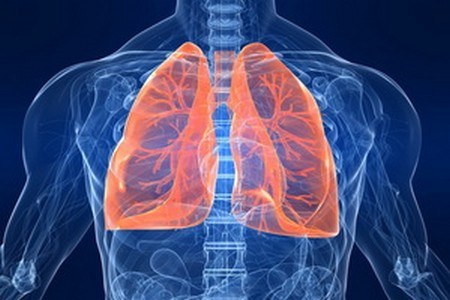
These vasodilators are usually well tolerated, but may cause bronchial side effects - bronchitis, bronchospasm. Therefore, their use may be limited in patients with concomitant pathology of the broncho-pulmonary system or with individual intolerance.
Various means
In addition to the above vasodilator drugs for the treatment of the lower extremities, there is a rather motley company of drugs that, in addition to the main effect, also have vasodilating properties. The breadth of the spectrum of action of these drugs is such that they are more often effective in conditions where it is necessary to improve metabolism in the tissues of the lower extremities or rheological properties blood (viscosity and fluidity), as well as enhance microcirculation. This may be necessary in the treatment of atherosclerotic lesions of the arteries of the legs and arms, diabetic angiopathy or varicose veins.
This group of vasodilators includes wide list drugs:
- Antispasmodics (papaverine, no-shpa).
- Means with an adenosine mechanism of action (Dipyridamole, Curantil).
- Purine derivatives (Pentoxifylline, xanthinol nicotinate).
- Prostaglandins and leukotrienes (Iloprost, Alprostadil, Vazaprostan, Alprostan).
Antispasmodics. Reduce tone and relax smooth muscles internal organs and vessels. Dipyridamole and Curantyl reduce platelet aggregation and increase the effects of prostaglandins. Separately, I would like to talk about purine and prostaglandin derivatives, which are effective in the treatment of angiopathy in diabetes mellitus, as well as in varicose veins and even in cases of atherosclerotic gangrene.

When choosing a remedy, you need to consult a doctor.
Pentoxifylline and xanthinol nicotinate stimulate microcirculation by expanding the arterioles and increasing the tone of the venules. In addition, they improve the functional state of endotheliocytes, platelets and erythrocytes. The most famous representative of this group is pentoxifylline. The effective daily dose of pentoxifylline for trophic disorders caused by varicose veins is 1200 mg.
Prostaglandins and leukotrienes combine the action of various vascular drugs (vasodilators, antiplatelet agents and angioprotectors). They simultaneously provide metabolic, immunomodulatory and anti-inflammatory effects and have proven themselves in the treatment of trophic disorders in varicose veins and diabetes mellitus. Prostaglandins are also used in the complex therapy of Raynaud's disease and obliterating endarteritis.
Thus, vasodilators are used in the treatment of various vascular pathologies of the lower extremities. A variety of mechanisms of action, a large number of analogues and wide range adverse reactions do not allow them to be used on their own. Such drugs should be prescribed by a doctor who has experience in their use and is able to recognize conditions in which the prescription of these drugs is contraindicated.
People suffering from headaches, dizziness, chest pain, chilliness and pain in the fingers and toes know that vascular spasm is the basis of their diseases. Its duration is varied, from several minutes to several days. They also know how to get rid of this disease. The problem of vascular spasm is solved with the help of drugs of a certain pharmacological section. The name of this section is vasodilators.
Classification of vasodilators
The mechanism for regulating the tone of the vascular wall is complex and diverse, hence the difficulty in sorting out the means for expanding the vessels, but the classification exists.
According to the mechanism of action, there are:
- neurotropic agents;
- myotropic agents;
- calcium channel blockers.
In turn, neurotropic agents are divided into:
- reflex (validol);
- central action;
- peripheral action.
The effect of myotropic drugs is explained by the effect on the muscle cells of the middle layer of the artery (unlike veins, arteries have, in addition to the outer connective tissue and inner endothelial membrane, a middle layer consisting of smooth muscle cells).
In this group, drugs are isolated - isoquinoline derivatives (papaverine, no-shpa), purine derivatives (eufillin, theophylline), imidazole derivatives (dibazole).
Neurotropic drugs include:
Calcium channel blockers prevent the formation of the actin-myosin protein complex, which reduces the vessel wall (cinnarizine). Calcium ions maintain the stability of this protein compound.
There are drugs with a mixed mechanism of action, such as nitrates (nitroglycerin). This vasodilator drug combines neurotropic and myotropic mechanism. Rauwolfia alkaloid reserpine acts on vascular innervation through a central and peripheral adrenergic effect.
Among the drugs that dilate blood vessels, there are those that act locally, without a pronounced general vasodilating effect on all vessels. Coronary lytics act primarily on the vessels of the heart. Validol, nitroglycerin, eufillin are used for spasm coronary vessels. Cinnarizine is intended to improve the condition of the cerebral vessels. The vasodilator drug phentolamine helps with vasospasm of the extremities.
Use in hypertension
Vasodilators are more commonly used as antihypertensive drugs in the treatment of hypertension, as well as coronary disease heart, diseases of the vessels of the brain, for the treatment of arterial vessels of the lower extremities and for numbness, chilliness and pain in the hands.
An increase in blood pressure is associated with vasospasm. When vascular tone is restored, perfusion (blood filling) of all organs improves, oxygen delivery to organs and tissues improves.
should be complex.
The modern approach to treatment suggests the use of 4 groups of drugs:
- ACE inhibitors (enalapril, lisinopril);
- diuretics (veroshpiron, indapamide);
- calcium channel blockers (amlodipine, verapamil);
- beta-blockers (metoprolol, nebivolol).
Created for ease of use combination medicine. Phosicardium is a combination of a diuretic and ACE inhibitor. Relevant vasodilator drugs myotropic (Kellin, drotaverine, eufillin) and neurotropic action (phentolamine, ornid, pentamine).
Use in violation of cerebral circulation
Violation cerebral circulation remains one of the leading causes of death. This disease can occur in different forms:
- transient transient disorder in the pool of cerebral vessels;
- chronic malnutrition of the brain regions.
An acute disorder proceeds according to the type of hemorrhagic or ischemic stroke of the brain against the background of hypertension or atherosclerosis of cerebral vessels. Such situations require immediate hospitalization and surgical treatment in a neurosurgical hospital. chronic disorder cerebral vessels may be the result of cervical osteochondrosis and vasoconstriction in vertebral artery syndrome.
With atherosclerosis, there is stenosis of the vessels, in which they lose their elasticity, and their lumen narrows not only due to spasm, but due to damage inner wall arteries with atherosclerotic plaques.
What situations require the appointment of drugs that dilate the vessels of the brain? In the presence of atherosclerosis, in some parts of the vessel there are zones of pronounced narrowing. Their blood supply is reduced. Vasodilator drugs expand only the relatively "healthy" part of the vessel. What's next? In a healthy area, the vessel expands, blood flow increases. In the area of blood supply to the diseased vessel, the situation is even worse. Doctors call this situation “reverse Robin Hood syndrome” (taken from the poor and given to the rich). It follows that vasodilators for the brain can be prescribed at the initial stages of the disease, while there are no severe atherosclerotic lesions of the arteries.
To improve the condition of the cerebral vessels, vasodilators are recommended for the head, which, being calcium antagonists, are called nootropics, that is, drugs that stimulate brain activity that increase the energy potential of the brain, resistance to injury and hypoxia, improve learning and memory. They are especially suitable for use in chronic ischemia brain, hypertension, migraine, vasoconstriction, senile dementia, depression. The predecessor of this group is the drug piracetam, which tops the list of modern nootropics. These are microhydrin, phenibut, glycine, aminalon, cerebrolysin.
Widely used vinpocetine and analogue cavinton, myotropic vasodilator xanthinol nicotinate, calcium antagonist cinnarizine. All of them provide a vasodilating effect.
Use in diseases of the arteries of the extremities
Dangerous diseases of the vessels of the lower extremities are stenosis of the arteries. Stenosis of the peripheral arteries of the legs occurs with diseases such as thromboangiitis obliterans. AT initial stages disease, every fifth patient does not know about the presence of the disease, it is asymptomatic. Smoking, the presence of hypertension and diabetes mellitus contribute to the development and progress of the disease. Vascular spasm leads to oxygen starvation of the muscles of the lower extremities, and one of the main symptoms of the disease is muscle pain, especially when walking. After walking a few meters, the patient is forced to stop because of pain in the legs. This symptom is called intermittent claudication.
For more late stages occur for a long time non-healing wounds and ulcers on the legs, the leg becomes cyanotic, pale or red-purple in color, hair growth stops in the area of circulatory disorders. The problems are not limited to this list. With complete occlusion of the arteries, gangrene develops, which entails dire consequences- the leg can be lost, in most cases the treatment is surgical - amputation.
Surgical methods of treatment are used for more early stages. This is angioplasty, the installation of a stent that expands the lumen of the vessel. It is necessary to treat stenosis of the peripheral vessels of the legs in a complex manner. This is a diet aimed at lowering low-density cholesterol, indispensable smoking cessation, statin drugs, sugar correction under the supervision of an endocrinologist. In the hospital, patients are prescribed droppers with solutions that improve blood flow (rheology).
It is mandatory to prescribe antiplatelet drugs (small doses of aspirin, chimes, cardiomagnyl).
Vasodilator tablets have found application in the treatment of diseases of the arteries of the lower extremities. As angioprotectors, a vasodilator of myotropic action nicotinic acid, a drug xanthinol nicotinate derived from it, along with trental, actovegin, is used. With concomitant varicose veins, preference is given to drugs detralex and troxevasin. They go well with herbal venotonics ( horse chestnut, red vine leaves).
Myotropic antispasmodics no-shpa, papaverine improve muscle nutrition for the lower extremities, relieve pain.
We figured out how to treat the vessels of the legs, let's talk about the hands. In addition to the same obliterating endarteritis, the vessels upper limbs may spasm due to pressure subclavian artery. by the most serious illness in this group of vasospastic diseases is Raynaud's disease and syndrome, affecting mainly young women. Raynaud's disease is a systemic, genetically determined disease that affects the small vessels of the hands, less often the legs. Raynaud's syndrome occurs under the action of predisposing factors and is a treatable condition, unlike a disease.
Predisposing factors, in addition to sex, are stress, systematic hypothermia, vibration, rheumatoid diseases. Pianists and typists get sick more often.
In the early stages, these are short-term spasms, then angioparalysis joins, pastosity, swelling, and bluish color of the fingertips appear. The trophoparalytic stage of arterial stenosis is accompanied by ulcers, necrosis up to self-amputation of the phalanges.
What is good for the legs is also good for the hands. You can't do without drugs to dilate blood vessels. Assign such groups of vasodilators as antispasmodics (no-shpa, papaverine), adrenergic blockers of central and peripheral action (chlorpromazine, tropafen), ganglioblockers (benzogexonium, ganglerone), vasodilators of myotropic action (nicotinic acid), calcium channel blockers (nifedipine, amlodipine ). Treatment with vasodilators is combined with acupuncture, physiotherapy, to restore blood supply.
With a decrease in the effectiveness of treatment, a preganglionic sympathectomy is performed.
Herbal vasodilators
The leader among plants with a vasodilating effect is ginkgo biloba; both pharmaceutical preparations and biologically active additives are made on its basis, in which it is often combined with another well-known plant, gotu kola.
Normalize arterial pressure, relieves spasms, improves brain function Baikal skullcap, decoction of hawthorn flowers and berries, parsley seed oil, ledum, buckwheat, basil, oregano, knotweed. Of these, infusions or decoctions of a vasodilating effect are prepared, and raw materials are also used in the manufacture of dietary supplements.
Purpose drug therapy with spasm and narrowing of the arteries, it was and remains the prerogative of the doctor. The treatment of circulatory disorders in the vessels of the brain is carried out by a neuropathologist, a neurosurgeon. Cardiac vessels are the concern of a cardiologist. Stenosis of the arteries of the extremities is treated by angiologists, rheumatologists.
Vascular problems also occur in children, especially often in the brain. We emphasize that in this case self-treatment is unacceptable. Share your concern about the presence of vascular spasms and the symptoms that your child has with the local pediatrician, and he, in turn, will direct you to the necessary consultation and examination.
Effective drugs for vessels of the head: medicinal review from VesselInfo
All materials on the site are published under the authorship or editorship of professional physicians,
but are not a prescription for treatment. Contact the experts!
In a number of diseases, including atherosclerosis described above, but also with migraine, /, after injuries, the brain experiences constant oxygen starvation due to vascular dysfunction. There are sensations that the head aches, hurts, splits. And all because the small capillaries penetrating the parts of the brain do not provide a sufficient supply of red blood cells to those in need of nutrition. nerve cells. For some time, the body compensates for this shortage by redistributing the flow of blood through various vessels. But without treatment Negative consequences malnutrition of the brain is increasing. Due to constant cellular starvation, partial death of neurons occurs, which is expressed in the development of senile dementia.
You see how important it is to maintain the health of the vessels of the brain in order to remain a full-fledged and healthy person for as long as possible.
Fortunately, vascular diseases, including those that feed the brain, can be treated. Drugs have been developed and successfully used that can reduce the size of atherosclerotic plaques, remove them. In addition to acting directly on the vascular wall, it is possible to improve blood characteristics, reduce its viscosity and ability to form blood clots.
Consider the most common drugs for cerebral vessels.
Drugs designed to dilate blood vessels
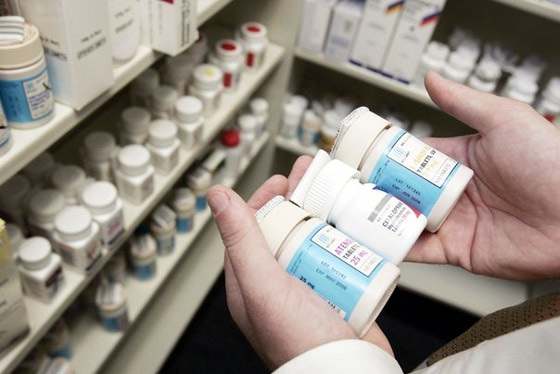
The pharmacological action of these drugs is to increase the blood supply to the brain. Additionally improved energy metabolism cells.
calcium antagonists
All preparations for the vessels of the brain from this group relax the arteries and practically do not change the tone of the veins. Blood flow increases and oxygen-rich blood flows to the brain. These drugs are widely used, and the third generation of such drugs is being developed.
All of these drugs are used to correct vascular disorders throughout the body. Since when taking them, you may experience side effects they must be taken strictly as prescribed by the doctor.
The first generation produced:
- Phenylalkylamine derivatives - verapamil (drugs called Isoptin, Finoptin);
- Derivatives of dihydropyridine - the active substance nifedipine (drugs Fenigidin, Adalat, Corinfar, Kordafen, Kordipin);
- Benzothiazepine derivatives based on the substance diltiazem (Diazem, Diltiazem).
In the second generation of these drugs, their spectrum expanded, such as:
- Isradipin (Lomir);
- Gallopamil, Anipamil, Falipamil;
- Amlodipine (Norvasc), felodipine (Plendil), nitrendipine (Octidipine), nimodipine (Nimotop), nicardipine, lacidipine (Lacipil), riodipine (Foridon);
- Klentiazem.
The next generation have noticeable advantages over previously released drugs that work on the same principle:
- First, they have a more prolonged action;
- Secondly, they demonstrate a higher selectivity of exposure;
- Thirdly, they give fewer negative side effects.
It is especially important that among calcium antagonist drugs that increase the lumen of the arteries, there are drugs that have a predominant effect on the vessels of the brain, without significantly affecting other vessels.
The most effective for brain vessels from this point of view:
- Nimodipine;
- Cinnarizine.
With severe atherosclerosis of the vessels, these drugs cannot be dispensed with. In the same time, all drugs in this group should not be treated as self-medication pills. Be sure to visit a cardiologist and a neurologist, the doctor will select and prescribe the funds you need. They are often prescribed as a permanent medication that is taken for life.
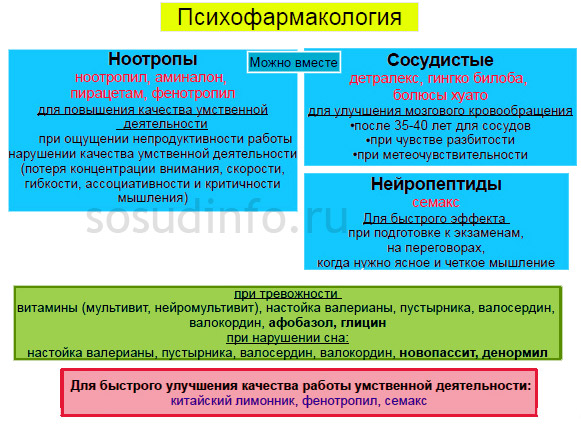
Preparations based on plant alkaloids
Vinca-based preparations
The most beneficial effect on cerebral circulation is produced by derivatives of the alkaloid of a common garden plant - periwinkle. Just this substance acts in the body as an antispasmodic, relaxing cerebral vessels. In addition to this action, vinca alkaloid improves metabolism in brain tissues. At the same time, preventing platelets from sticking together, this substance increases blood microcirculation in the vessels of the brain, therefore, provides nerve cells with sufficient nutrition.
Such a well-known drug for the vessels of the brain, like Vinpocetine, is just a derivative of this alkaloid. Other names for this tool are:
- Bravinton;
- Vero-Vinpocetine;
- Vinpocetine;
- Vincetin;
- Cavinton;
- Cavinton Forte;
- Telektol.
This remedy is widely advertised and has so few contraindications that it is prescribed a large number patients. Please note that self-administration of Cavinton and Vinpocetine without consulting a doctor is still unacceptable. The drug is available in tablets and solutions for intravenous injections. Drip injection by injection is more effective. Depending on your health condition, your doctor will suggest optimal scheme treatment with this drug.
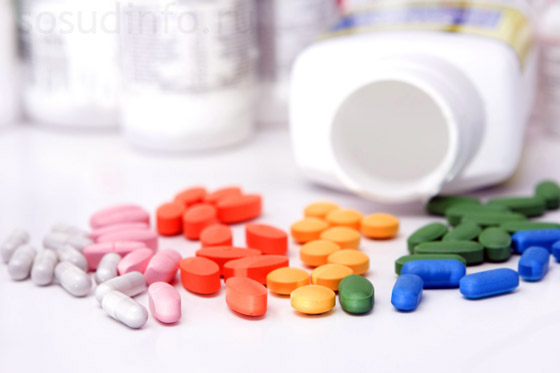
Gingko biloba preparations
A unique relic plant gives people drugs with a complex effect on the blood supply to the brain. When taking gingko preparations, vasospasm is simultaneously relieved, blood fluidity changes, microcirculation and vascular wall permeability increase. Additionally, thanks to the antioxidant properties, gingko biloba medicines strengthen the walls of veins and arteries and destroy free radicals. And that's not all - these drugs have a pronounced anti-edematous effect at the level of the brain and improve the metabolism of nervous tissue. Gingko biloba extract contains medicines such as
- Tanakan;
- Bilobil;
- Gingium;
- Ginkor Fort and others.
These remedies are over-the-counter and can be taken on your own. But you need to carefully read the contraindications and do not combine gingko with aspirin due to an increased risk of cerebral hemorrhage.
Derivatives of nicotinic acid
These drugs do not dilate large vessels. At the level of capillaries, nicotinic acid still has a vasodilating, in other words, vasodilating effect. Side effect from taking nicotinic acid - redness of the skin, just associated with this property.
Drugs in this group help deposited on the walls of blood vessels. That's why nicotinic acid the doctor prescribes for a complex effect, including for strengthening the vascular wall, to prevent vascular accidents. Most often, treatment is carried out in courses in the form of injections under the supervision of physicians.
Tablets of this group of medicines:
- Nicotinic acid, Enduratin, Nikoshpan are dispensed by prescription, since with their uncontrolled intake can cause significant damage to the health of the liver.
Video: expert opinion on vasodilators
Preparations that strengthen the walls of blood vessels
These funds maintain the elasticity of blood vessels. Beneficial effect on capillary permeability, activate metabolic processes in the walls blood vessels. First of all, that's how they work. In addition to them, some trace elements are needed.
- vitamin P, essential element, necessary for the good functioning of capillaries, is a whole group of biologically active substances contained in plants, otherwise these are bioflavonoids and polyphenols, the most important of which are rutin, anthocyanins, flavones, flavonols, catechins, more than one hundred and fifty in total. In combination with vitamin C, which has antioxidant properties that prevent cell destruction due to excessive formation of free radicals, the effect of vitamin P is more pronounced. The simplest and most well-known drug that contains these vitamins is Askorutin. Anthocyanins are found in all dark berries, such as blueberries and shadberry. Therefore, dietary supplements based on them, such as Blueberry Forte, will bring undoubted benefits to the health of cerebral vessels.
- Potassium, silicon, selenium. Most useful for blood vessels, including cerebral, vitamin complexes additionally containing minerals. In addition to them, strengthen the vascular walls nutritional supplements, Dietary supplements containing plants-adaptogens.
- Dihydroquercetin, one of the most effective preparations of this group, it contains bioflavonoids of Siberian or Dahurian larch.
Vitamins and minerals are useful not only for the treatment of brain disorders that have arisen, but also for their prevention. These drugs can be taken independently, taking into account the dosages recommended by the manufacturers.
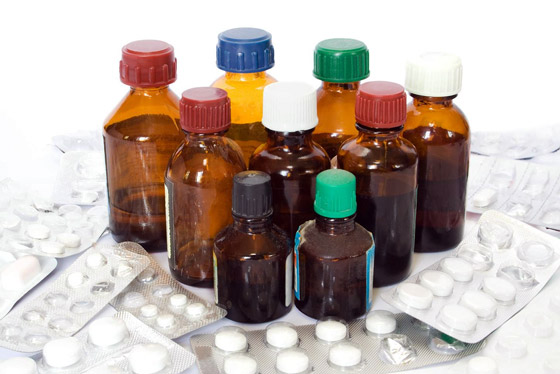
Homeopathic preparations
The action of these drugs is based on the transfer to the patient's body of the energy-information characteristics contained in them in extremely low concentrations. medicinal substances. As a rule, homeopathy involves long-term use and individual selection of remedies for each patient. In the case, you can buy homeopathic drops at the pharmacy. Well proven such as Edas - 138 and Cerebralik, used in atherosclerosis of cerebral vessels to improve memory, reduce dizziness and other unpleasant manifestations. Homeopathic remedies in pharmacies are dispensed without prescriptions, they can be taken independently, guided by the instructions.
Medicines for the treatment of migraine
Separately, you should consider drugs that relieve seizures. Although this disease is also associated with impaired work circulatory system, but pathological condition it's completely different here. A migraine attack has five stages.
- The first stage, otherwise precursors, or prodrome, begins with a weakening of vascular tone.
- The second stage, the so-called aura, during which a vascular spasm develops at the branching point carotid artery and a decrease in the blood supply to the arterial wall itself is increasing.
- The third stage is characterized by the expansion of the vessels of the head with a reduced tone of their walls. The amplitude of the pulsation is thus increased. Insufficient blood supply at this moment vascular walls makes them very vulnerable to stretching.
- The fourth stage is complicated by the resulting edema of the vessel wall and surrounding tissues due to impaired permeability.
- The fifth stage is the return of the vessels to their original state.
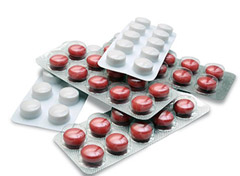 Knowing the mechanism of the development of a migraine attack, we see that drugs for dilating the vessels of the head in this case will not help.
Knowing the mechanism of the development of a migraine attack, we see that drugs for dilating the vessels of the head in this case will not help.
At the first stage, when the first precursors appear, they immediately begin taking analgesics and non-steroidal anti-inflammatory drugs.
Then drugs will help - antagonists of the hormone serotonin, from the group of triptans. These drugs are prescribed to counteract the sharp expansion of the vessels of the neck and head. Imigran, released in 1993, is the most popular remedy this group, although now the line of drugs similar to it has expanded. Zomig, Amerge, Maxalt - each of them has differences in the speed of exposure, its strength and duration. Drugs for the treatment of migraine patients are prescribed only by a doctor.
In order to not harm your health when choosing and taking medicines that improve the functioning of cerebral vessels and not harm your health, it is imperative you need to visit a doctor of the appropriate specialty at least once. Attention! We are not a "clinic" and are not interested in providing medical services readers. We also note that completely safe treatment"On the Internet", it is impossible to appoint without a face-to-face appointment! All recommendations are indicative. Contact the experts.
Step 1: pay for the consultation using the form →
You can increase the amount if your question is complex, requires in-depth consideration and / or a voluminous answer (for example, a detailed transcript of analyzes, etc.).
Hello! We cannot prescribe any medications over the Internet, especially since the doctor has already prescribed everything necessary. You need to control the level of blood pressure, as its increase also contributes to headaches. If damage to the brain vessels is associated with atherosclerosis, hypertension, then it will be problematic to deal with it, and in such cases vasodilators are prescribed, drugs that improve trophism in the nervous tissue. Any appointment must be made by a doctor internally. IrinaHello! I've had this condition for several years now. If in the summer in the heat I do some work, for example, in the beds, then I get up, then I sit down or work in the greenhouse, with a sharp squat, it gets dark in my eyes for a few seconds, it’s like I was hit in the solar plexus and I pass out for about 2 minutes. The doctors said not to work in the heat.
Vessel SpecialistInfo
Hello! The doctors are right, you really should stop working in the heat. Probably, your vessels do not have time to adapt to fluctuations in temperature and sudden changes in body position, this happens as idiosyncrasy is not necessarily a symptom of a disease.
Vessel SpecialistInfo
Hello! Probably, in addition to VVD, you have some other disease, for which the neurologist prescribed nootropics. Of the other ways to improve your condition, we can only advise walking, adequate physical activity, correct mode days with enough sleep and the absence of bad habits.
madina
Hello! I am 36 years old, there was a noise in my ear similar to the distant noise of a vacuum cleaner. I went to an ENT doctor and did an audiometry. The doctor who did the audiometry made a diagnosis: the initial manifestations of neuritis auditory nerve. After all the tests, the ENT diagnosed him with acute cochlear neuritis of the right ear. Discharged Neuromultivit, Valerian and Cavinton, took 1 month. The last few days the noise has become more intrusive. I'm going to a neurologist. Hemoglobin 106. Sometimes dizziness. What could it be?
Vessel SpecialistInfo
Hello! We cannot question the diagnosis already made by an ENT doctor, especially since you have undergone the necessary examinations. A consultation with a neurologist will not hurt, because the vascular nature of the pathology cannot be ruled out.
Linar
Hello! I came to the neurologist with complaints of frequent headaches in the back of the head, which have been tormenting me for 2 years. The neurologist sent for an MRI of the brain and blood vessels, an X-ray cervical spine and eye examination. The results revealed straightening of the cervical lordosis. Passed the course manual therapy and neck massage. Did not help. Then the doctor suggested that it was vascular headaches, namely vasospasm. He prescribed to drip Actovegin for 10 days, then drink Vinpocetine for 3 months. Please tell me how adequate the treatment is prescribed, taking into account the fact that nothing special was found on the MRI of the cerebral vessels, and is it true that vascular headaches (vasospasm) cannot be diagnosed by any tests. Thank you!
Vessel SpecialistInfo
Hello! The doctor is right, the treatment is adequate. To assess the condition of the vessels, ultrasound can be done, but spasm may not be detected. In addition, you should perform exercise therapy for the spine.
Almost everyone, regardless of age, has experienced headaches or experienced chronic pain - migraines. Often, these problems occur against the background of spasms. If attacks are accompanied by increased fatigue, memory impairment, they may be the result of diseases vascular system brain, directly related to circulatory disorders.
When the diagnosis is confirmed by a specialist, vasodilators or vasodilators are prescribed. This type of drugs, in turn, is divided into several subspecies, each of which has its own specifics.
Vasodilator drugs - the principle of action
List of the most popular and effective vasodilators for the brain looks like this:
- Eufillin;
- Nitroglycerine;
- Theobromine;
- Cinnarizine;
- Cavinton;
- Picamilon;
- Angiotrophin;
- Papaverine;
- Actovegin;
- Vinpocetine.
If attacks are provoked by spasms of the walls of the arteries or by the accumulation of atherosclerotic plaques that interfere with blood flow, the doctor may prescribe vasodilators.
Vasodilator drugs, normalize blood pressure, inhibit spasms, increase the elasticity of the walls of blood vessels and provoke relaxation of the walls of the arteries, which helps to resume their work.
With chronic pain, the calcium content in the blood increases, vasodilator drugs reduce the level of calcium. One of the types of these drugs, calcium antagonist, takes its name precisely because of the effect it has.
After normalization of blood flow, blood enriched with oxygen begins to flow to the brain and general state the patient improves.
Types of vasodilators and indications for use
The course of treatment with these drugs is prescribed for diseases such as
chronic increase in pressure, paroxysmal damage to the arteries, aneurysms, disorders in the autonomic nervous system or the presence of atherosclerotic plaques in the vessels.
Vasodilator drugs for the brain are divided into the following types:
- calcium antagonists;
- neurotropic agents(normalize the work of the nervous tissue);
- myotropic(affect the walls of blood vessels);
- nitrates(combine the actions of the above means of the first and second types);
- medicines with plant extracts.
Some distinguish a fourth type - funds traditional medicine , the use of which is practiced in parallel with drug treatment.
The entire classification is based on the method of the drug’s effect on a person in order to achieve one result - restoring blood flow, eliminating oxygen starvation and relieving the patient of pain.
Pills vasodilating for the brain
Pain in the head is most often provoked oxygen starvation. Due to impaired blood flow, lack of oxygen and useful substances provokes the death of brain cells and can cause serious complications: from disability to death.
It is extremely important before self-treatment to consult with medical specialist who will prescribe the pills the patient needs.
The main disadvantage of vasodilator drugs their non-selective action is considered. They provoke vasodilation not only in the brain, but throughout the human body. And in some cases, this leads to a decrease in pressure. In this case, treatment may do more harm than good.
Headache medications
Before taking a headache pill, you should understand its nature and possible cause.
- Attacks can be chronic and in such a case, vasodilator drugs for the brain should be taken. (Eufillin, Nitroglycerin).
- Women who are expecting a baby headache arises against the backdrop of changes in hormonal background. In this case, great care should be taken No-Shpu, Panadol, Paracetamol. These drugs are "sparing" and they are characterized by minimal contraindications.
- Pain can occur against the background of an increase or decrease in pressure. In such cases, it is recommended to first measure the pressure and, when choosing medicinal product, take into account the readings of the tanometer.
- Headaches may be due to nervous strain. In such cases, in addition to drugs, it is recommended to reduce the psychological burden on the body. If a person has suffered a traumatic brain injury, chronic pain will pass over time.
The most important thing in this situation is the strict observance of the doctor's instructions, the violation of which can provoke a condition similar to a migraine later, from which it will be extremely difficult to get rid of.
Vasodilator drugs for the brain with osteochondrosis
The arteries located in the region of the spine are involved in the delivery of blood to the occipital lobe of the head. Osteochondrosis is a disease in which the vertebral discs change their shape, pain syndrome triggering vasospasm.
Bone formations can press on vertebral artery or on the nerve endings that are located around it.
Violation of blood flow to the occipital lobe is accompanied by characteristic symptoms: fainting, headaches; impaired hearing, vision, memory and coordination.
For the treatment of migraines in osteochondrosis prescribed Eufillin, Stugeron, Trental or Cavinton. Due to the high risk of ischemic stroke, self-medication in this case is dangerous to health, so the course of drugs must be prescribed by a specialist.
What vasodilator can be given to children?
In children infancy the use of vasodilator drugs is most often caused by birth trauma or birth through caesarean section accompanied by pressure drops.
AT adolescence cerebral blood flow is disturbed mainly due to an increase in the training load.
For children, doctors prescribe almost the same vasodilator drugs as adults, but less aggressive, due to unwanted stress on the fragile children's body.
Vessels are an important anatomical structure in the human body. It is thanks to them that the blood circulates throughout the body, nourishing the organs with oxygen and all the necessary substances. Failure of the vascular system leads to serious pathological changes, especially for the vessels of the brain. Violation of the integrity of the vessel wall in the brain or its blockage leads to the development of a stroke, dangerous pathology, the consequences of which can lead not only to disability, but death.
The walls of blood vessels require some care, especially for people who have accompanying illnesses that affect their condition, for example, diabetes mellitus or atherosclerosis. As a result of many diseases, as well as in consequence age-related changes, the use of a means to strengthen blood vessels becomes very important.
When should you think about taking vascular medications?
The intake of any drugs must be agreed with the attending physician, otherwise they can only cause even more harm. Reasons to see a doctor and undergo preventive examination, become:
- age of a person after 65 years. As a rule, by this age, various changes in the body begin to occur and very often it is the vessels that suffer, their walls become more vulnerable, thin and brittle. Therefore, preventive examinations over the age of 65 should take place twice a year;
- high blood pressure or its jumps. High blood pressure is one of the main causes of development, so this pathological change should never be ignored;
- a history of atherosclerosis or diabetes mellitus. So, atherosclerosis is a pathology that leads to narrowing of the walls of blood vessels, as a result of the formation of atherosclerotic plaques in them. Diabetes slowly affects the entire body, but it is the vessels that become the main target;
- , tinnitus, faintness, dizziness, blackouts in the eyes;
- paroxysmal numbness of the limbs;
- change in heart rate, arrhythmia, tachycardia.
Medications for cerebral vessels
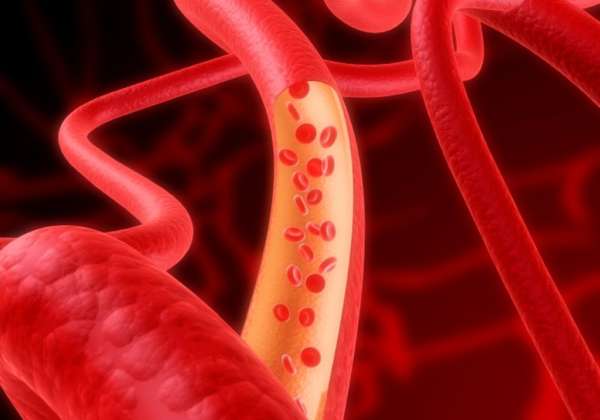
The process, as well as their expansion, is a lengthy process that requires integrated approach and doctor's diagnosis. Below we will give a list of drugs and their main actions on the vessels, but taking each of these drugs is possible only after agreeing with your doctor.
Note! The presented list of drugs is for informational purposes only.
The capillaroprotective drug askorutin helps to strengthen the walls of blood vessels, relieve them of fragility, and also improve immune properties organism.
The drug is used for chronic venous insufficiency, it also actively fights trophic disorders, has an anti-inflammatory effect, prevents fragility and permeability in the vessels of the brain.
The course of treatment is 3-4 weeks, taking one tablet three times a day daily.
The drug is contraindicated:
- diabetes;
- severe kidney disease;
- increased blood clotting, a tendency to form blood clots;
- urolithiasis disease.
Piracetam
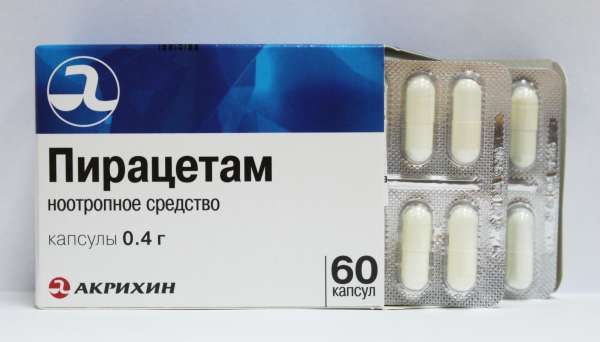
Nootropic drug which has a positive effect on the functioning of the brain. Main effects:
- improves mental work;
- increases the level of attention and memory;
- normalizes metabolic processes in the work of brain neurons;
- improves microcirculation and cerebral blood flow.
The drug is produced in the form of: tablets, capsules and solution for injection. Analogues of the drug are: nootropil, lucetam, escotropil.
Duration of administration and dosage depends on the diagnosis and age of the patient.
Piracetam is contraindicated:
- pregnant women;
- people with hemorrhagic stroke;
- with kidney disease;
- with individual intolerance to the components of the drug.
Aminalon
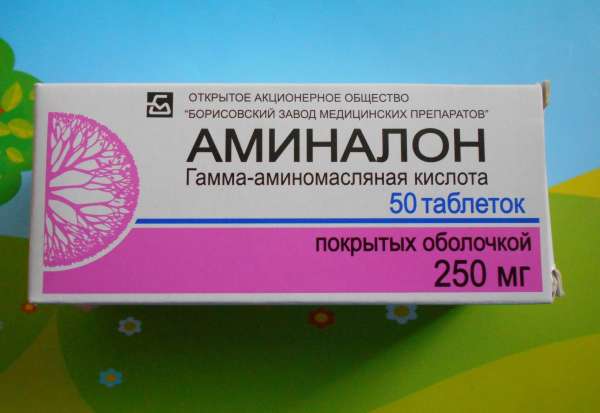
Nootropic Aminalon improves thinking and memory, eliminates toxic compounds from brain structures, improves its metabolism. It also contributes to more quick recovery motor activity and speech after a stroke, acts as an anticonvulsant and can reduce blood pressure.
The drug is prescribed after:
- transferred craniocerebral injuries;
- stroke
- encephalopathy;
- with hypertension;
- with atherosclerosis, for vasodilatation;
- at various violations CNS, including cerebral palsy.
Aminalon is produced mainly in the form of tablets, the course of treatment, depending on the diagnosis, lasts from two weeks to four months. daily dose reception is established by the doctor and divides it into two doses.
The drug has no special contraindications, with the exception of individual intolerance to the components.
Bravinton
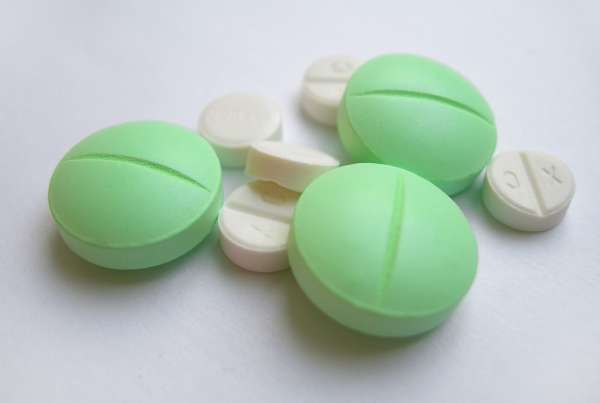
Nootropic and psychostimulant. Braviton promotes:
- improvement;
- normalizes blood pressure;
- improves trophic tissue of the eye.
The drug is used for any diseases associated with impaired cerebral circulation, in particular for strokes, atherosclerosis, encephalopathy, aphasia, etc.
Available in the form of tablets and solution for infusion. In tablets, the drug is used for two months, 2 times a day. Injections are performed once a day, for 10-14 days.
The drug is contraindicated during pregnancy and lactation, as well as in severe forms of arrhythmia.
Bilobil
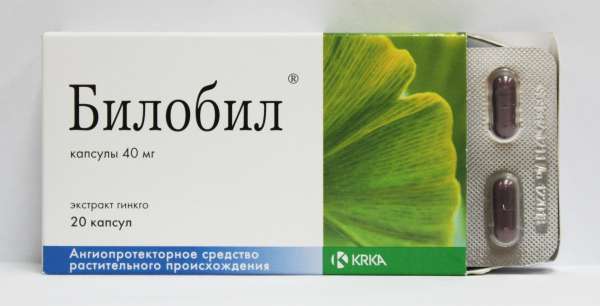
An agent that improves blood circulation in the structure of the brain, plant origin. The drug has a psychostimulating, nootropic and antihypoxic effect. Improves blood circulation, supplies the brain with glucose and oxygen. It also strengthens the walls of blood vessels, improves their tone, reduces permeability, and dilates small arteries.
Indications for use:
- multiple sclerosis;
- old age;
- treatment of the consequences of a stroke;
- encephalopathy;
- dementia;
- impaired memory and concentration of attention at any age;
- elimination of symptoms: noise in the head, anxiety, dizziness.
Bilobil is contraindicated during pregnancy and individual intolerance.
Cardiomagnyl
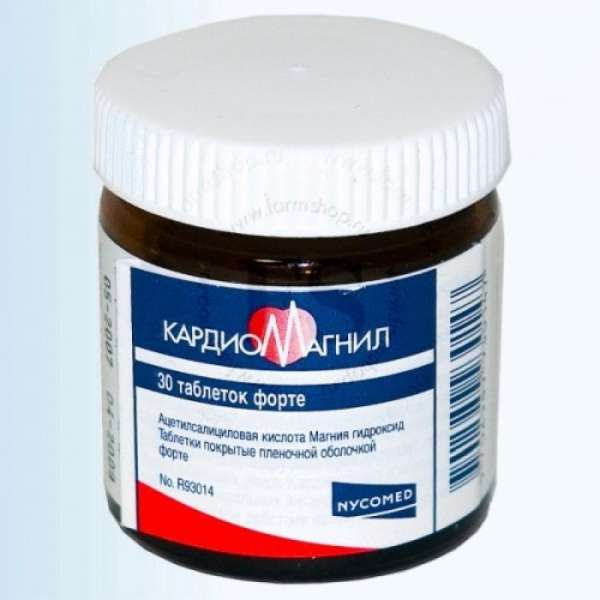
Medication combined composition, is used for cardiovascular pathologies and circulatory disorders. The main indication of the drug is the prevention of diseases accompanied by high content platelets. These include:
- myocardial infarction;
- thrombosis;
- angina;
- ischemic stroke;
- for rehabilitation after surgery on the vessels or the heart.
Cardiomagnyl is contraindicated in people with a tendency to bleeding or a history of bleeding, as the drug helps to thin the blood. Also, the medicine is not taken when:
- exacerbation peptic ulcer gastrointestinal tract;
- hemorrhages in the ventricles of the brain;
- bronchial asthma;
- renal failure in the acute period;
- breastfeeding and the first, third trimester of pregnancy.
Available in tablets.
Lovostatin
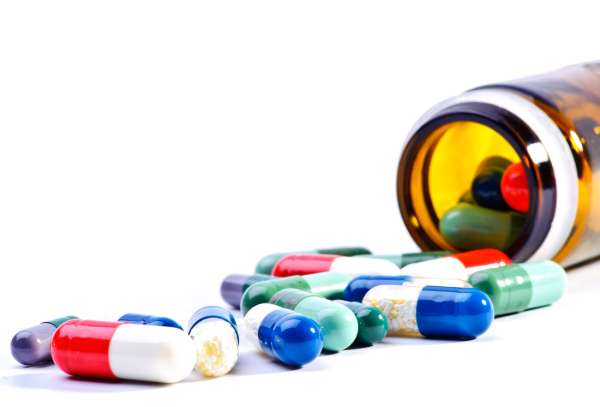
The drug of the statin group, which has the property of lowering cholesterol levels and the formation of atherosclerotic plaques.
Indications:
- prevention of strokes and heart attacks;
- atherosclerosis;
- high blood cholesterol.
Contraindications:
- acute pathologies of the kidneys and liver;
- pregnancy and lactation;
- general serious condition sick;
- individual intolerance to the substances that make up the drug.
Nutrition to strengthen blood vessels
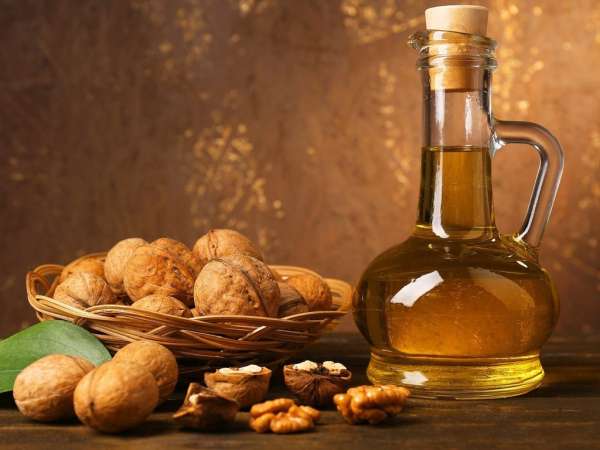
To strengthen the walls of blood vessels, also protect yourself from atherosclerosis and the formation cholesterol plaques, should be followed proper diet. Fats should be ingested, but in limited quantities and in the right way, for example, along with milk, cottage cheese or nuts. So, with atherosclerosis and other pathologies in which vascular blockage occurs, fatty and fried foods should be abandoned.
There are also a number of products that help strengthen the walls of blood vessels, among them:
- olive oil;
- berries;
- black chocolate;
- walnuts;
- spinach;
- cabbage;
- garlic;
- pumpkin;
- rose hip;
- grapefruit, etc.
General recommendations

Absolutely all processes in the body depend on the work of the brain, therefore, in no case should one neglect the health of blood vessels. Apart from drug therapy the right way of life is important. Among the main recommendations, the implementation of which will bring you filling the body with energy, include:
- cold and hot shower. Excellent remedy not only to strengthen blood vessels, but also for general rejuvenation of the body and improve immunity;
- breathing exercises;
- physiotherapy;
- walks in the open air;
- rejection of bad habits;
- sleep mode, at least 6-8 hours a day.
Phytotherapy

Herbal medicine has been used at all times. Phytotherapy is an important component for strengthening the whole organism, including blood vessels. Herbs such as:
- a decoction of a mixture of wild rose, motherwort and meadowsweet;
- tincture of bergenia roots.
Also beneficial effect sea buckthorn oil, it should be consumed on an empty stomach, 20 ml. in a day. If you do not have stomach problems (ulcers, gastritis or advanced level acidity) it will be useful to use lemon juice diluted in a ratio of 1:3 and the addition of honey.
Damage to the cerebral vessels leads to serious disorders different nature up to disability and even death. Therefore, their condition should be treated carefully and supported. normal work with the help of medications, proper lifestyle and folk methods. But, remember that taking any medication must be agreed with the doctor.
Reading strengthens neural connections:
doctor

